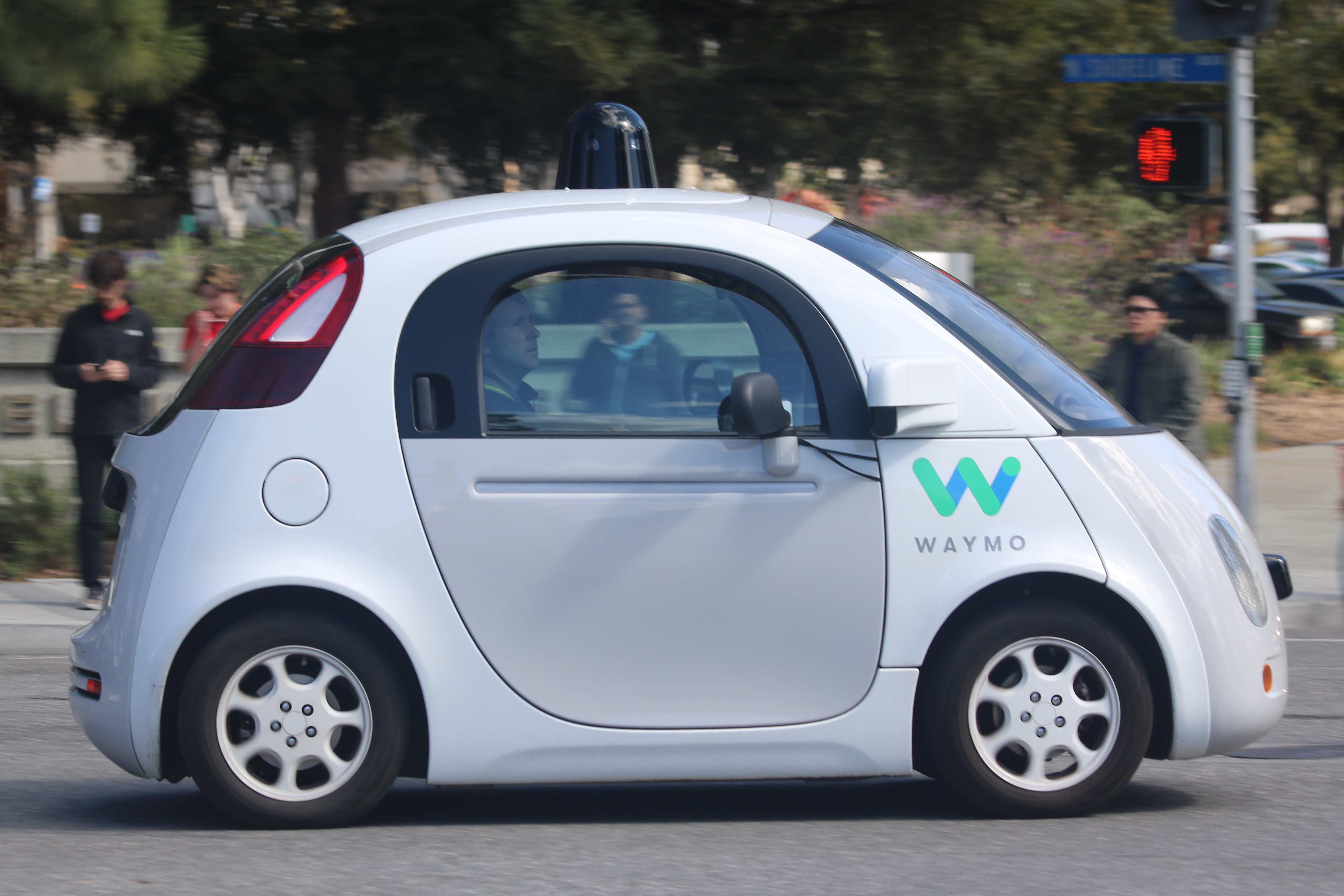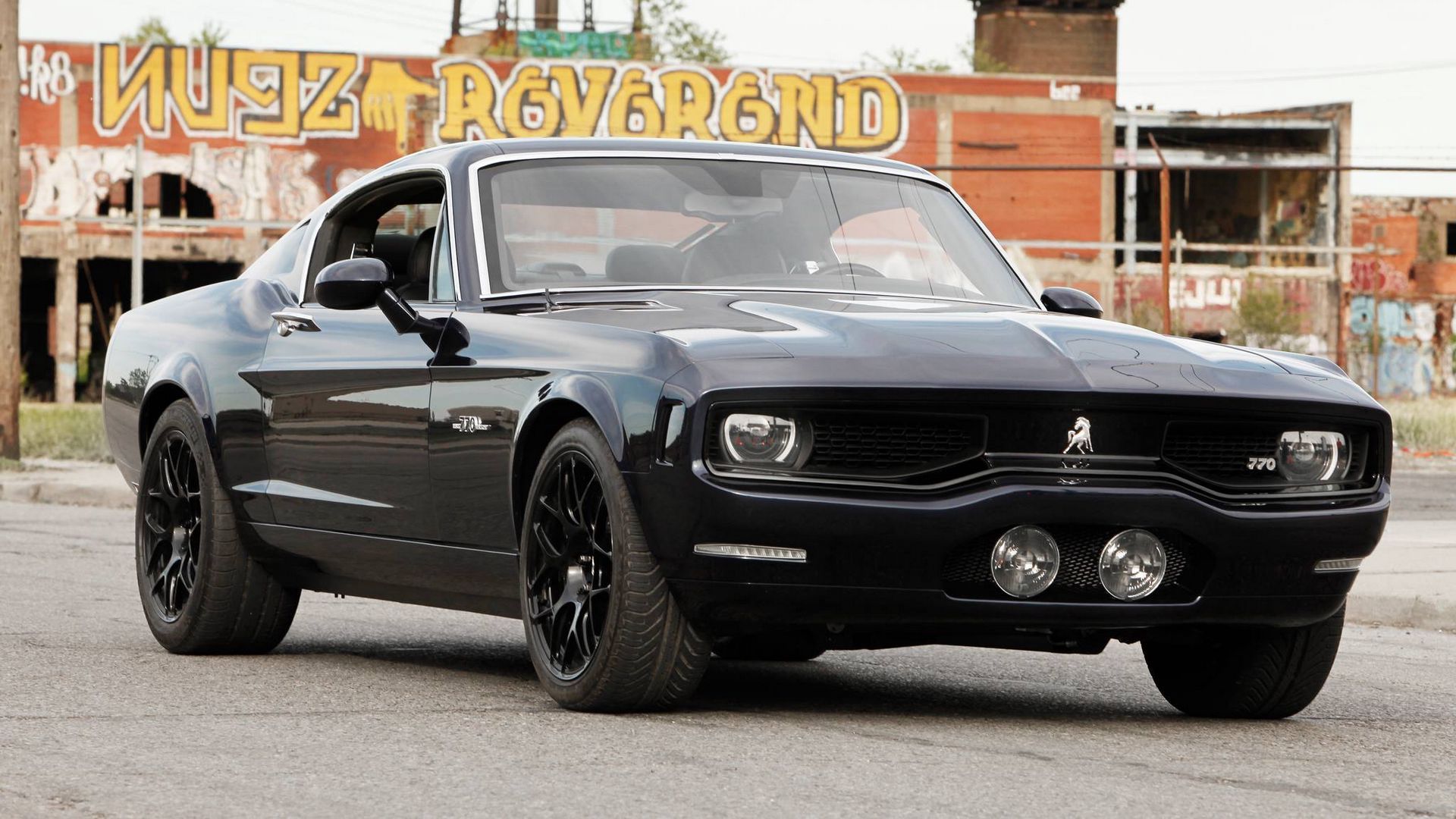
Ever find yourself on the road, watching a particular car approach, and a tiny, almost involuntary sigh escapes you? Maybe you tense up just a little, or perhaps you instinctively give them a wider berth. It’s a common experience for many of us, as some cars earn reputations not just for how they perform, but for the distinct, often frustrating, way their drivers behave on the road. We’re talking about those vehicles that have become, for better or worse, shorthand for a certain *type* of driver – sometimes aggressive, sometimes oblivious, but rarely uneventful.
These reputations don’t always reflect the car itself, of course. It’s more about the image and driving habits tied to the people behind the wheel, a fascinating blend of anecdotal evidence, viral moments, and even statistical trends. But let’s be honest, when you spot one of these notorious rides in your rearview mirror, or see one cutting across three lanes without a signal, that internal alarm bell definitely rings. It’s a phenomenon that taps into our shared driving experiences and the often-exaggerated stereotypes that make our commutes just a little more interesting.
We’re diving deep into the automotive world’s hall of infamy, exploring ten cars that everyone seems to associate with terrible drivers. From the powerful muscle machines that invite a heavy foot to the eco-friendly hybrids that mysteriously clog up the fast lane, we’re dissecting why these particular models have landed on everyone’s “brace yourself” list. Get ready to nod in agreement, perhaps chuckle a bit, and maybe even find your own daily driving observations validated. This isn’t just about pointing fingers; it’s about understanding the fascinating interplay between car culture, human behavior, and the open road.
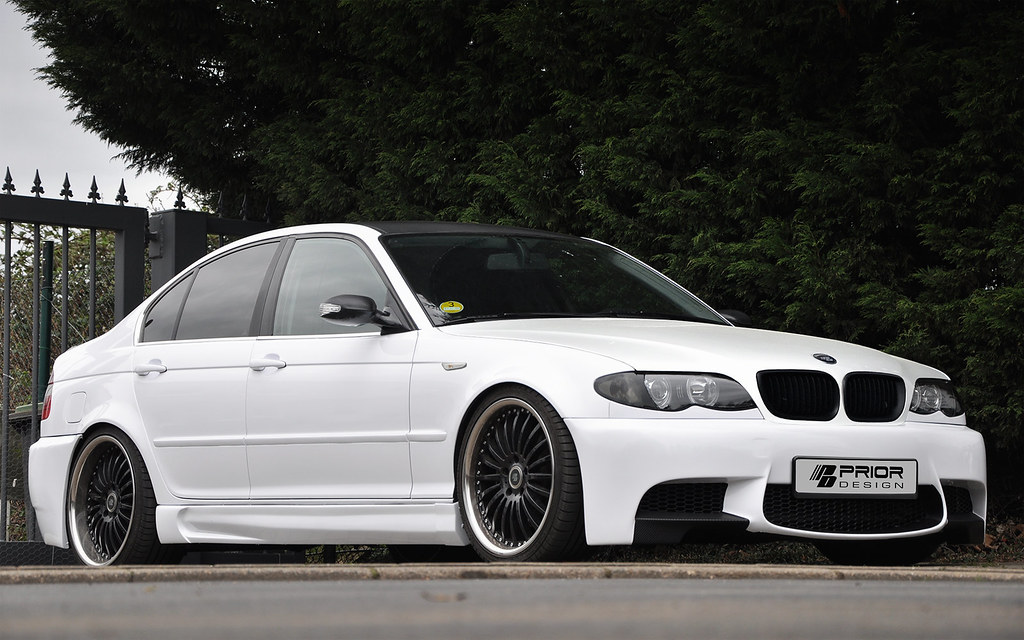
1. **BMW 3 Series**The BMW 3 Series has practically become a legend in the realm of aggressive driving associations, a reputation solidified over years of highway encounters and countless frustrated anecdotes. For what feels like an eternity, its owners have been stereotyped as the quintessential tailgaters, often seen weaving through traffic at high speeds with a disconcerting disregard for lane discipline. There’s a persistent, almost iconic, belief that the concept of using a turn signal is an optional extra that BMW drivers simply choose to forgo, adding to the mystique of their road persona.
This perception is so deeply ingrained that jokes about “BMW turn signals” not being included in the purchase price have become a common cultural reference, a testament to how widespread and consistent this observation is. It’s almost a given that when a 3 Series appears in your rearview mirror, you instinctively brace yourself for some spirited—or, more accurately, often reckless—maneuvers. The car’s sleek design and performance capabilities, combined with a perceived driving arrogance, make it a top contender for the “terrible driver” stereotype, a classic example of vehicle image shaped by driver actions.
While the car itself is a marvel of German engineering, meticulously built for performance and a dynamic driving experience, its drivers are frequently blamed for pushing those limits far beyond what’s reasonable or safe on public roads. The allure of its sporty handling, precision engineering, and powerful engine seems to attract a certain kind of assertive, even impatient, driver. Someone who perhaps views the road as their personal domain, a place to fully unleash the car’s capabilities without much consideration for traffic laws or the comfort of other motorists.
The anecdotal evidence supporting this stereotype isn’t just talk; some data actually backs up the association with assertive driving. According to a 2023 Insurify study, BMW ranks ninth among car brands for speeding tickets, a broad indicator that suggests drivers of the brand’s vehicles, including the immensely popular 3 Series, are indeed more prone to putting the pedal to the metal. This statistical backing only strengthens its unofficial nickname as the “left-lane overlord,” cementing its reputation as a vehicle often driven by those who prefer to command the road, with little regard for conventional driving etiquette or the patience of others.
One reader humorously, or perhaps exasperatedly, stated, “BMW BMW BMW BMW BMW BMW BMW BMW BMW BMW BMW. Use the damn blinkers!” This sentiment perfectly encapsulates the widespread frustration many drivers feel when encountering a 3 Series. It’s a compelling case study in how a car’s engineering prowess and luxury status can sometimes be overshadowed by the consistent, albeit exaggerated, driving habits of a visible segment of its owners, leading to a stereotype that is hard to shake.
Car Model Information: 2018 Acura MDX 3.5L w/Technology Package
Name: BMW 3 Series
Manufacturer: BMW
Production: 1975–present
Class: Compact executive car
Predecessor: BMW 02 Series
Categories: 1970s cars, 1980s cars, 1990s cars, 2000s cars, 2010s cars
Summary: The BMW 3 series is a line of compact executive cars manufactured by the German automaker BMW since May 1975. It is the successor to the 02 series and has been produced in seven generations.
The first generation of the 3 Series was only available as a 2-door saloon; the model range expanded to include a 4-door saloon, 2-door convertible, 2-door coupé, 5-door estate, 5-door liftback (“Gran Turismo”; discontinued in 2019) and 3-door hatchback body styles. Since 2013, the coupé and convertible models have been marketed as the 4 Series; these styles no longer being included in the 3 Series.
The 3 Series is BMW’s best-selling model line, accounting for around 30% of the BMW brand’s annual total car sales, and has won numerous awards throughout its history. The M version of the 3 series, M3, debuted with the E30 M3 in 1986.
Get more information about: BMW 3 Series
Buying a high-performing used car >>>
Brand: BMW Model: 3 Series
Price: $18,885 Mileage: 131,273 mi.
Read more about: Beyond the Billionaire Bling: An Insider’s Look at Warren Buffett’s 10 Unexpected Car Choices and Driving Philosophies
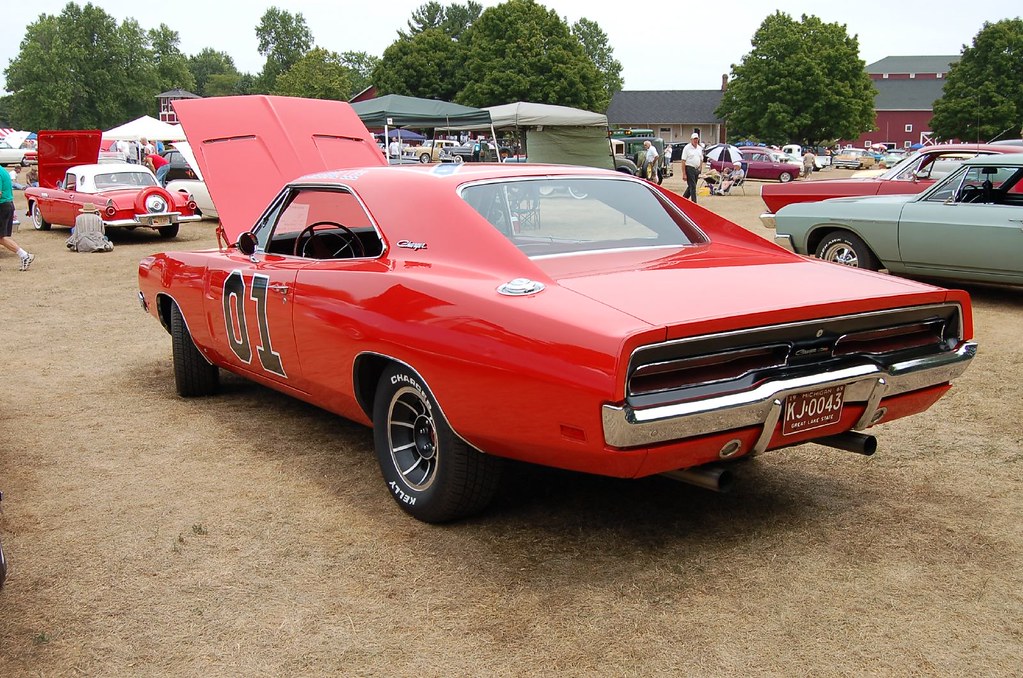
2. **Dodge Charger**If the BMW 3 Series holds court as the left-lane overlord, then the Dodge Charger is arguably the undisputed king of the concrete jungle, instantly recognizable for its penchant for burning rubber and blasting down highways like they’re private drag strips. This quintessential American muscle car has cultivated a formidable reputation, one that goes far beyond its impressive horsepower figures. Many people instantly associate the Charger with reckless speeding and an almost defiant street racing behavior, embodying a vehicle that practically dares its driver to unleash its full, unbridled potential, often to the profound annoyance of other motorists.
The sheer, raw power lurking under the hood of a Charger seems to act as an irresistible siren call for drivers who are eager to test boundaries and experience an intense adrenaline rush. Unfortunately, this enthusiasm for performance frequently translates into risky maneuvers on public roads, from aggressive, last-second lane changes to sudden, neck-snapping accelerations that leave other drivers scrambling to react. Such habits not only frustrate other motorists but also contribute significantly to a general feeling of unease and even danger when a Charger looms large in the rearview mirror, its aggressive stance and roaring engine only amplifying the perceived threat.
The Charger’s deep-seated connection to street racing culture is not merely anecdotal; it’s a phenomenon particularly pronounced in major metropolitan areas. In cities like Atlanta and Miami, for instance, law enforcement agencies have specifically flagged the Dodge Charger for a notably high rate of illegal maneuver citations, providing concrete data that further solidifies its notorious image. This isn’t just about excessive speed; it’s about a driving style that often borders on exhibitionism, with owners seemingly eager to show off the car’s formidable capabilities in public spaces, often without due consideration for inherent risks or established traffic laws.
As one astute reader succinctly put it, “The most correct answer would likely be the Dodge Charger/Challenger, Ford Mustang, or Chevrolet Camaro — essentially, any domestic rear-wheel-drive car with moderate to high horsepower.” This observation precisely highlights how the very nature of these powerful machines seems to inherently attract drivers inclined towards aggressive acceleration and high-speed maneuvers. The Charger’s inherent potential as a practical, spacious sedan is often completely overshadowed by its pervasive reputation for attracting a subset of drivers who prioritize raw adrenaline and daring over basic road safety, making it a constant subject of cautionary tales on our increasingly crowded roads.
Its loud engine, a characteristic often celebrated by enthusiasts, only adds fuel to this fiery image, creating an unmistakable auditory signature that precedes or follows many of its most infamous on-road exploits. This auditory cue further cements the Charger’s place in the public imagination as a car driven by individuals who have a palpable “need for speed,” whether it’s on a designated track or a busy city street.
Car Model Information: 2022 Dodge Charger SXT
Name: Dodge Charger
Caption: 1969 Dodge Charger
Manufacturer: Dodge
Production: 1966–1978,1981–1987,2005–present
ModelYears: 1966–1978,1982–1987,2006–present
Categories: 1960s cars, 1970s cars, 1980s cars, 2000s cars, 2010s cars
Summary: The Dodge Charger is a model of automobile marketed by Dodge in various forms over eight generations since 1966.
The first Charger was a show car in 1964. A 1965 Charger II concept car resembled the 1966 production version.
In the United States, the Charger nameplate has been used on mid-size cars, personal luxury coupes, subcompact hatchbacks, and full-size sedans.
Get more information about: Dodge Charger
Buying a high-performing used car >>>
Brand: Dodge Model: Charger
Price: $19,987 Mileage: 37,151 mi.
Read more about: 12 Cars That Made Drivers Say ‘Nope, Not Again!’ – Your Ultimate Guide to Avoiding Instant Regret on Wheels
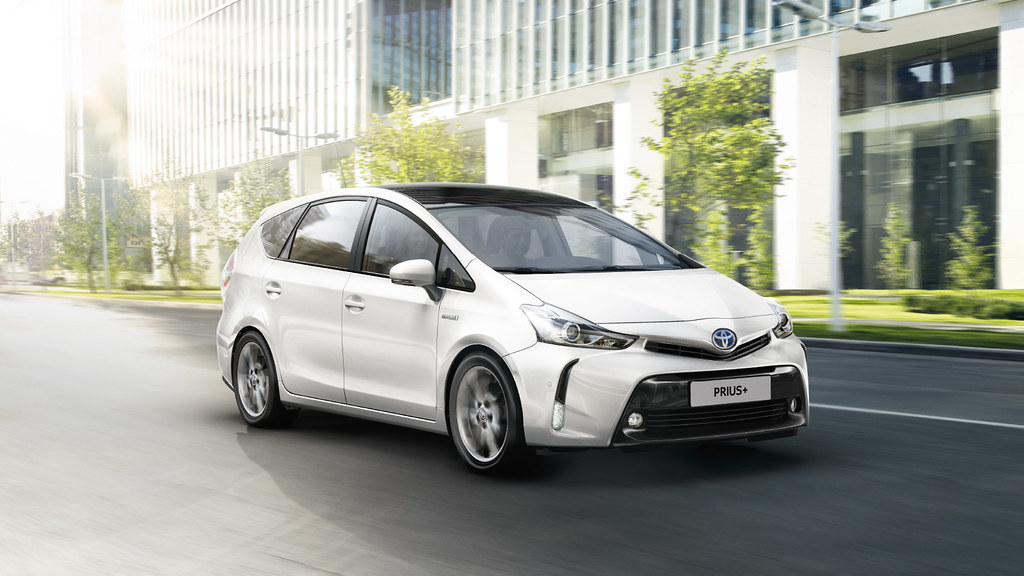
3. **Toyota Prius**Now, let’s execute a dramatic, almost jarring, shift in gears, moving from the realm of muscle and luxury performance to something entirely different: the humble Toyota Prius. While its counterparts on this list are notorious for aggressive or high-speed antics, the Prius finds itself in this ignominious lineup for almost the exact opposite reason – its drivers are infamous for a specific brand of slow, hesitant, and often perplexing road behavior. It’s a stereotype that has become as pervasive as the car’s eco-friendly appeal, consistently attracting motorists who seem to prioritize hyper-mileage and fuel efficiency above maintaining any sort of reasonable flow of traffic.
The hybrid’s core identity, centered around remarkable fuel efficiency and unwavering reliability, appears to inadvertently attract an overly cautious and sometimes seemingly oblivious type of driver. This driving style often leads to widespread frustration among other road users. Many drivers will readily complain that Prius owners frequently clog up fast lanes, drive significantly below the posted speed limit, or brake unnecessarily and unpredictably, creating infuriating bottlenecks and a cascade of annoyance for everyone behind them, particularly during peak commuting hours.
While the car itself is an undeniably efficient, reliable, and practical piece of Japanese engineering, it has unfortunately become the unofficial poster child for frustratingly slow commutes and a general perceived lack of situational awareness on the road. It seems to embody a driving philosophy where every drop of gasoline saved is a victory, even if it means sacrificing the collective rhythm and speed of traffic. This creates a unique brand of road rage, where frustration stems not from aggression, but from an almost passive obstruction.
Interestingly, this perception isn’t entirely without merit, and it’s supported by some data points, albeit in an ironic twist. The Prius routinely appears on lists of vehicles with the fewest traffic violations, which, paradoxically, can sometimes be interpreted as its drivers being *too* cautious, leading to other forms of road disruption. Its driver base is statistically less likely to speed or engage in risky overtakes, aligning perfectly with the stereotype of a conservative, almost timid, driving style that can unintentionally impede traffic flow and irritate those who share the road.
A reader’s observation perfectly captured this sentiment, stating: “Prius (Prii?). Always driving way below the speed limit, making random stops in the middle of the road, fading into your lane for no discernible reason, fumbling with their phones to handle their next Uber Eats delivery, and the poster car for ‘bad drivers never miss their exit’.” This vivid description paints a picture of a driver who, while perhaps not intentionally malicious, creates unpredictable and often frustrating scenarios for everyone else. Essentially, the Prius may be a champion at saving gas, but it doesn’t seem to save patience on the road, proving that there’s more than one path to earning a “bad driver” reputation.
Car Model Information: 2015 Toyota Prius Two
Name: Toyota Prius
Caption: Fifth generation Prius (XW60)
Manufacturer: Toyota
Production: December 1997 – present
ModelYears: 2001–present (US)
Class: ubl
BodyStyle: unbulleted list
Layout: unbulleted list
Sp: uk
Categories: 2000s cars, 2010s cars, 2020s cars, All-wheel-drive vehicles, All Wikipedia articles in need of updating
Summary: The Toyota Prius ( PREE-əss) (Japanese: トヨタ・プリウス, Hepburn: Toyota Puriusu) is a compact/small family liftback (supermini/subcompact sedan until 2003) produced by Toyota. The Prius has a hybrid drivetrain, which combines an internal combustion engine and an electric motor. Initially offered as a four-door sedan, it has been produced only as a five-door liftback since 2003.
The Prius was developed by Toyota to be the “car for the 21st century”; it was the first mass-produced hybrid vehicle, first going on sale in Japan in 1997 at all four Toyota Japan dealership chains, and subsequently introduced worldwide in 2000.
In 2011, Toyota expanded the Prius family to include the Prius v, an MPV, and the Prius c, a subcompact hatchback. The production version of the Prius plug-in hybrid was released in 2012. The second generation of the plug-in variant, the Prius Prime, was released in the U.S. in November 2016. The Prius family totaled global cumulative sales of 6.1 million units in January 2017, representing 61% of the 10 million hybrids sold worldwide by Toyota since 1997. Toyota sells the Prius in over 90 markets, with Japan and the United States being its largest markets.
Get more information about: Toyota Prius
Buying a high-performing used car >>>
Brand: Toyota Model: Prius
Price: $8,995 Mileage: 139,989 mi.
Read more about: The Automotive Hall of Shame: 15 Infamous Rides and Their Reputations for Bad Drivers and Dangerous Flaws
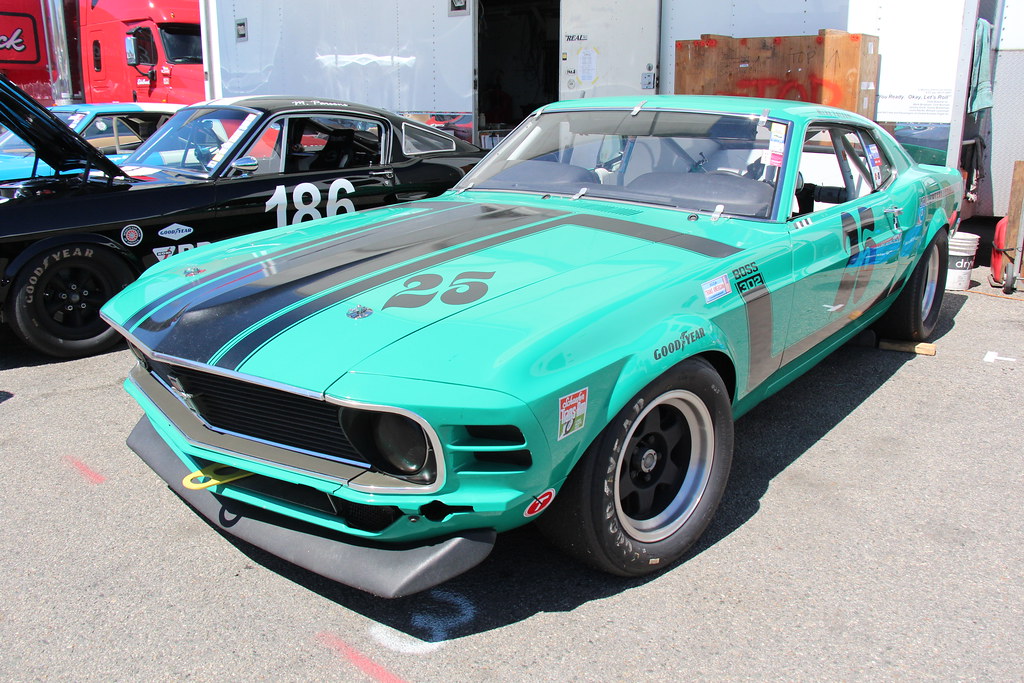
4. **Ford Mustang**Returning to the high-octane, adrenaline-fueled side of the automotive spectrum, the Ford Mustang is another iconic car inextricably tied to reckless drivers, often for reasons deeply rooted in pure showboating and a thirst for attention. Mustang owners, particularly those who frequent car meets, casual gatherings, or simply find themselves in a situation with an appreciative audience, have earned a distinct notoriety for losing control during attempts to perform crowd-pleasing stunts, dramatic burnouts, or simply accelerating too aggressively off the line. The now-ubiquitous image of a Mustang sliding sideways into a curb, or worse, careening into an unsuspecting crowd, has unfortunately become a common sight in viral videos across the internet, indelibly cementing this stereotype in the public consciousness and giving many pause when they see one nearby.
While the Mustang itself is an enduring symbol of American automotive power, freedom, and a storied racing heritage, its overall reputation significantly suffers from the highly visible actions of a vocal minority of its owners. These so-called “bad apples” have, over time, created a pervasive image of dangerous overconfidence and a lack of judgment associated with the car. Seeing one rev loudly next to you at a stoplight often immediately raises a silent red flag, prompting other drivers to instinctively prepare for an unpredictable burst of speed or a clumsy, ill-advised attempt at a dramatic launch that could go wrong. It’s almost as if the car’s powerful presence and muscle car aesthetic compels some drivers to act out, believing they can handle its formidable capabilities without the requisite training, experience, or caution.
The anecdotes surrounding Mustang crashes are not merely urban legends; national safety data somewhat aligns with these widely held perceptions. This data consistently places Mustangs high on lists for incidents related to misjudged acceleration and driver overconfidence, painting a concerning picture. Ford Mustangs are frequently involved in crash reports directly tied to amateur stunts and unfortunate loss of vehicle control, indicating that the viral videos are not isolated incidents but rather reflective of a broader, more consistent pattern of behavior. This statistical backing reinforces the idea that while plenty of responsible owners exist who drive their Mustangs safely, the car’s inherent design and powerful engine seem to uniquely attract drivers prone to pushing limits in fundamentally unsafe ways, often with spectacular and damaging results.
A particularly insightful comment from a reader articulated this sentiment perfectly, stating, “I wanna say Mustangs, but it’s not the car, it’s the driver. Here’s the thing, if you honestly believe you are a superior driver and you aren’t a pro, you are probably the one causing trouble.” This observation brilliantly highlights the crucial human element behind the stereotype: it’s less about the car being inherently “bad” or unsafe, and more about how the car’s characteristics appeal to, and perhaps exacerbate, certain pre-existing driving tendencies in its owners. The Mustang, therefore, remains a compelling and often dramatic example of a vehicle whose public image is heavily shaped by the bold (and sometimes disastrous) choices of a few who seem to mistake public roads for a private stunt track. Its iconic status makes these incidents all the more memorable and, unfortunately, contributes to its enduring “bad driver” association.
Car Model Information: 2024 Ford Mustang GT Premium
Name: Ford Mustang
Caption: 2024 Ford Mustang GT Convertible
Aka: Ford T5 (Germany)
Manufacturer: Ford Motor Company
Production: March 1964 – present
ModelYears: 1965–present
Class: Unbulleted list
BodyStyle: Unbulleted list
Layout: Front-engine, rear-wheel-drive layout
Categories: 1970s cars, 1980s cars, 1990s cars, 2+2 coupés, 2000s cars
Summary: The Ford Mustang is an American automobile manufactured and marketed by Ford since 1964, as Ford’s longest nameplate in continuous production. Currently in its seventh generation, it is the fifth-best selling Ford car nameplate. The namesake of the “pony car” automobile segment, the Mustang was developed as a highly styled line of sporty coupes and convertibles derived from existing model lines, initially distinguished by its pronounced “long hood, short deck” proportions.
Originally predicted to sell 100,000 vehicles yearly, the 1965 Mustang became the most successful vehicle launch since the 1927 Model A. Introduced on April 17, 1964 (16 days after the Plymouth Barracuda), over 400,000 units were sold in its first year; the one-millionth Mustang was sold within two years of its launch. In August 2018, Ford produced the 10-millionth Mustang; matching the first 1965 Mustang, the vehicle was a 2019 Wimbledon White convertible with a V8 engine.
The success of the Mustang launch led to multiple competitors from other American manufacturers, including the Chevrolet Camaro and Pontiac Firebird (1967), AMC Javelin (1968), and Dodge Challenger (1970). It also competed with the Plymouth Barracuda, which was launched around the same time. The Mustang also had an effect on designs of coupes worldwide, leading to the marketing of the Toyota Celica and Ford Capri in the United States (the latter, by Lincoln-Mercury). The Mercury Cougar was launched in 1967 as a unique-bodied higher-trim alternative to the Mustang; during the 1970s, it included more features and was marketed as a personal luxury car.
From 1965 until 2004, the Mustang shared chassis commonality with other Ford model lines, staying rear-wheel-drive throughout its production. From 1965 to 1973, the Mustang was derived from the 1960 Ford Falcon compact. From 1974 until 1978, the Mustang (denoted Mustang II) was a longer-wheelbase version of the Ford Pinto. From 1979 until 2004, the Mustang shared its Fox platform chassis with 14 other Ford vehicles (becoming the final one to use the Fox architecture). Since 2005, Ford has produced two generations of the Mustang, each using a distinct platform unique to the model line.
Through its production, multiple nameplates have been associated with the Ford Mustang series, including GT, Mach 1, Boss 302/429, Cobra (separate from Shelby Cobra), and Bullitt, along with “5.0” fender badging (denoting 4.9 L OHV or 5.0 L DOHC V8 engines).
Get more information about: Ford Mustang
Buying a high-performing used car >>>
Brand: Ford Model: Mustang
Price: $43,950 Mileage: 19,565 mi.
Read more about: 14 Classic Rides That Boomers Loved But Millennials and Gen Z Just Can’t Stand: Unpacking Why These Iconic Cars Fail to Appeal Now
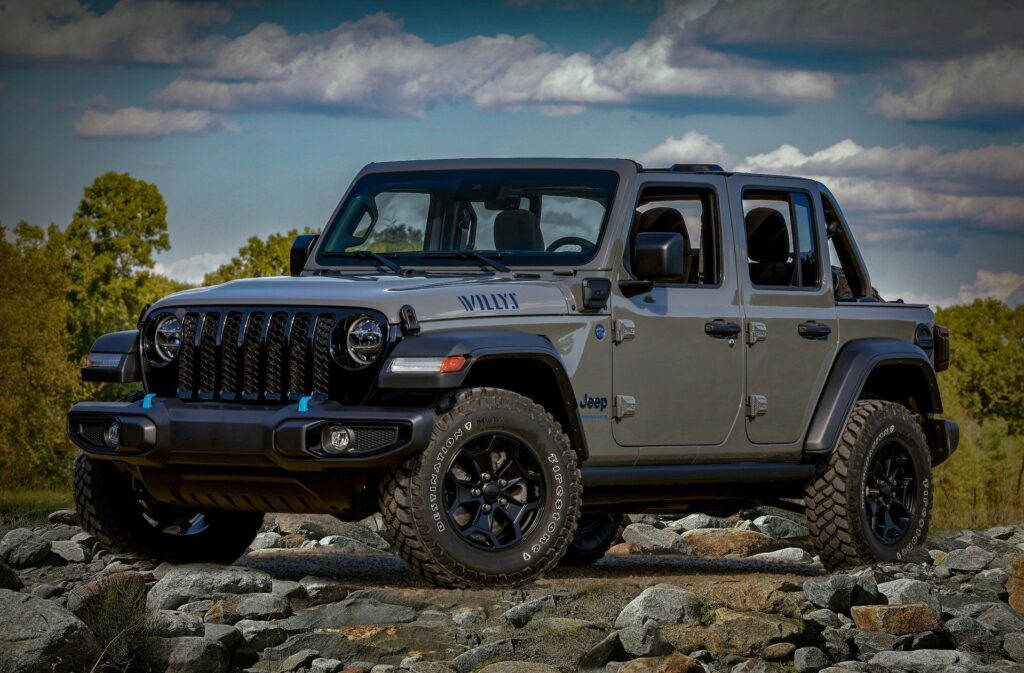
5. **Jeep Wrangler**Transitioning once again, from the realm of asphalt gladiators and speed demons to the rugged world of off-road adventurers, the Jeep Wrangler holds a truly unique, albeit often criticized, spot on our list of cars with deeply ingrained bad driver associations. While celebrated globally for its iconic, rugged design and unparalleled off-road capabilities, Wrangler drivers frequently find themselves under scrutiny for their perceived lack of conventional road manners and a general tendency to treat public streets as if they were challenging, unpaved trails. This perspective often translates into a very specific set of driving habits that can be perplexing, frustrating, and at times, overtly hazardous for other motorists attempting to navigate shared roadways.
A common complaint leveled against Wrangler drivers is “lane drifting,” a behavior perhaps exacerbated by the vehicle’s inherent design. While a Wrangler is supremely capable of tackling rough, uneven terrain with impressive agility, its high center of gravity and suspension setup might not offer the most stable or precise handling characteristics at sustained highway speeds. Furthermore, the prevalence of popular modifications among Wrangler enthusiasts, such as oversized tires and significantly lifted suspensions, can further contribute to a less predictable and less stable on-road presence. These modifications, specifically intended for extreme off-roading, sometimes make the vehicle less suited for the smooth, controlled, and precise movements that are not just expected, but necessary, in everyday traffic, thereby fueling the stereotype of carefree—and often distinctly careless—driving habits.
The very essence and ethos of the Wrangler—its adventurous spirit, its promise of freedom, and its ability to conquer virtually any terrain—seems to subtly inspire some drivers to carry that “go anywhere, do anything” mentality directly onto paved roads. This can manifest as a noticeable indifference to strict lane discipline, a slower reaction time in crowded urban settings, or a general casualness towards traffic regulations that contrasts sharply with the precise and often urgent maneuvers expected in dense, fast-moving traffic. While Wranglers are undoubtedly fun vehicles that offer a unique and exhilarating driving experience, their perceived instability at higher speeds, coupled with these observed driving habits, only serves to reinforce their contentious position on this list, making many other drivers wary.
Indeed, the Jeep Wrangler’s reputation for attracting “bad drivers” isn’t typically about aggressive speeding or reckless maneuvers in the same vein as a muscle car, nor is it about an exasperating, excessive caution akin to the Prius. Instead, it’s primarily about a perceived disconnect between the vehicle’s incredible off-road prowess and its performance within the highly structured, rule-bound environment of public roads. It’s a vivid reminder that a car’s fundamental design and its intended purpose can profoundly influence the public’s perception of its drivers, especially when that design implicitly encourages a style of driving that isn’t always compatible with the explicit and implicit rules of the shared road. The sheer size and imposing nature of many modified Wranglers also plays a psychological role, leading other drivers to feel their presence more acutely.
Steering further into the automotive hall of infamy, we move beyond the usual suspects of luxury speedsters and muscle car show-offs to unveil another segment of vehicles that, for entirely different reasons, have become synonymous with less-than-stellar driving habits. From the ubiquitously affordable sedan to the executive-class luxury vehicle and the spirited rally-inspired compact, these next five rides continue to fuel our collective road frustrations and perpetuate widely held stereotypes.
Car Model Information: 2017 Jeep Wrangler Unlimited Sport
Name: Jeep Wrangler
Caption: Jeep Wrangler Unlimited, Sahara edition
Manufacturer: Jeep
Class: Compact SUV
Production: 1986–present
Predecessor: Jeep CJ
Layout: Front-engine, rear-wheel-drive layout,rear-wheel drive
Chassis: Body-on-frame
Related: AIL Storm
Categories: 1980s cars, 1990s cars, 2000s cars, 2010s cars, All-wheel-drive vehicles
Summary: The Jeep Wrangler is a series of compact and mid-size four-wheel drive off-road SUVs manufactured by Jeep since 1986, and currently in its fourth generation. The Wrangler JL, the most recent generation, was unveiled in late 2017 and is produced at Jeep’s Toledo Complex.
The Wrangler is a direct progression from the World War II Jeep, through the CJ (Civilian Jeeps) produced by Willys, Kaiser-Jeep, and American Motors Corporation (AMC) from the mid-1940s through the 1980s. Although neither AMC nor Chrysler (after it purchased AMC in 1987) have claimed that the Wrangler was a direct descendant of the original military model — both the CJ Jeeps and the conceptually consistent Wrangler, with their solid axles and open top, have been called the Jeep model as central to Jeep’s brand identity as the rear-engine 911 is to Porsche.
Similar to the Willys MB and the CJ Jeeps before it, all Wrangler models continue to use a separate body and frame, rigid live axles both front and rear, a tapering nose design with flared fenders, a fold-flat windshield and can be driven without doors. Also, with few exceptions, they have part-time four-wheel drive systems, with the choice of high and low gearing, and standard open bodies with removable hard or soft tops. However, the Wrangler series was specifically redesigned to be safer and more comfortable on-road, to attract more daily drivers, by upgrading its suspension, drivetrain, and interior, compared to the CJ line. The suspension on all Wranglers included trackbars and anti-roll bars, and, from the 1997 TJ onwards, front and rear coil springs instead of the previous leaf springs.
From 2004 on, the Wrangler has been complemented with long-wheelbase versions, called Wrangler Unlimited. 2004-2006 models were longer versions with 2 doors. In 2004 only automatic transmission-equipped “Unlimited” versions were sold. In 2005 both an automatic and manual 6-speed (NSG-370) were offered. Since 2007, the long-wheelbase Wranglers were four-door models, offering over 20 in (508 mm) more room. By mid-2017 the four-door models represented three-quarters of all new Wranglers on the market.
Get more information about: Jeep Wrangler
Buying a high-performing used car >>>
Brand: Jeep Model: Wrangler
Price: $20,725 Mileage: 111,103 mi.
Read more about: 12 Cars That Made Drivers Say ‘Nope, Not Again!’ – Your Ultimate Guide to Avoiding Instant Regret on Wheels
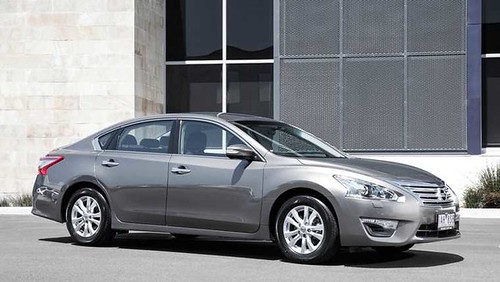
6. **Nissan Altima**And now, for a truly surprising, yet undeniably pervasive, entry: the Nissan Altima. This unassuming sedan has somehow, almost against all odds, carved out a truly notorious reputation as the “unofficial car of bad drivers.” It’s a title that’s not just whispered on the highways but echoed across social media platforms, with countless memes and exasperated posts cementing its place as a symbol of road-going recklessness. This stereotype isn’t just about isolated incidents; it’s a deep-seated perception linked to a consistent pattern of driving behaviors that make other motorists instinctively wary.
The Altima’s affordability and widespread availability mean it’s absolutely everywhere you look, inevitably leading to a higher frequency of negative encounters on the road. Drivers of Altimas are frequently associated with a distinct brand of aggressive driving that includes excessive speeding, unapologetic tailgating, and a general, almost cavalier, disregard for basic traffic rules. The phrase “Big Altima Energy” has become a popular, almost iconic, shorthand online to describe this particular blend of driving audacity, often implying a driver who is perpetually in a hurry and seemingly immune to the collective norms of the road.
Further cementing its infamous status are the highly specific observations shared by many drivers, particularly concerning the prevalence of Altimas sporting tattered, expired temporary license plates. As one reader colorfully put it, “Nothing makes me more nervous than driving near a clapped out Altima. Whatever happens, you know they don’t have insurance.” This perception, whether entirely accurate or a cultural exaggeration, adds another layer of anxiety for other motorists, suggesting a driver who might be cutting corners not just on the road, but potentially in other areas of responsibility as well.
It’s a fascinating case study in how a car’s practical attributes — its reliability, fuel efficiency, and accessible price point — can become overshadowed by the consistent, highly visible actions of a subset of its owners. The sheer volume of Altimas on the road, combined with these distinct behavioral patterns and the amplifying effect of social media, means that even a single sighting can trigger a collective sigh or an immediate increase in defensive driving, proving that a car doesn’t need a roaring engine or a luxury badge to earn a place on everyone’s “brace yourself” list.
Car Model Information: 2023 Nissan Altima SR FWD
Name: Nissan Altima
Caption: 2024 Nissan Altima SR (L34; US)
Manufacturer: Nissan
Aka: Nissan Bluebird
Production: 1992–present
Class: Compact car
Predecessor: Nissan Bluebird,Nissan Stanza
ModelYears: 1993–present
Categories: 2000s cars, 2010s cars, 2020s cars, All-wheel-drive vehicles, All Wikipedia articles written in American English
Summary: The Nissan Altima is a mid-size car manufactured by Nissan since 1992. It is a continuation of the Nissan Bluebird line, which began in 1955.
The Altima has historically been larger, more powerful, and more luxurious than the Nissan Sentra but less so than the Nissan Maxima. The first through fourth-generation cars were manufactured exclusively in the United States and officially sold in North and South America, along with the Middle East and Australia. For other markets, Nissan sold a related mid-size sedan called the Nissan Teana which was between the Altima and Maxima in terms of size. In 2013, the Teana became a rebadged version of the fifth-generation Altima.
The name “Altima” was originally applied to a top trim line of the Nissan Leopard for the Japanese market in 1986, and then to the Nissan Laurel Altima mid-size car sold in Central America and the Caribbean before 1992. In 1992, Nissan discontinued the Stanza which was a Nissan Bluebird clone, replacing it with the US-built Altima, while remaining a compact car. The first Altima was produced in June 1992, as a 1993 model. All Altima models for the North American market were built in Smyrna, Tennessee, until June 2004, when Nissan’s Canton, Mississippi plant also began producing the model to meet high demand.
Get more information about: Nissan Altima
Buying a high-performing used car >>>
Brand: Nissan Model: Altima
Price: $20,500 Mileage: 33,732 mi.
Read more about: 12 Cars That Made Drivers Say ‘Nope, Not Again!’ – Your Ultimate Guide to Avoiding Instant Regret on Wheels
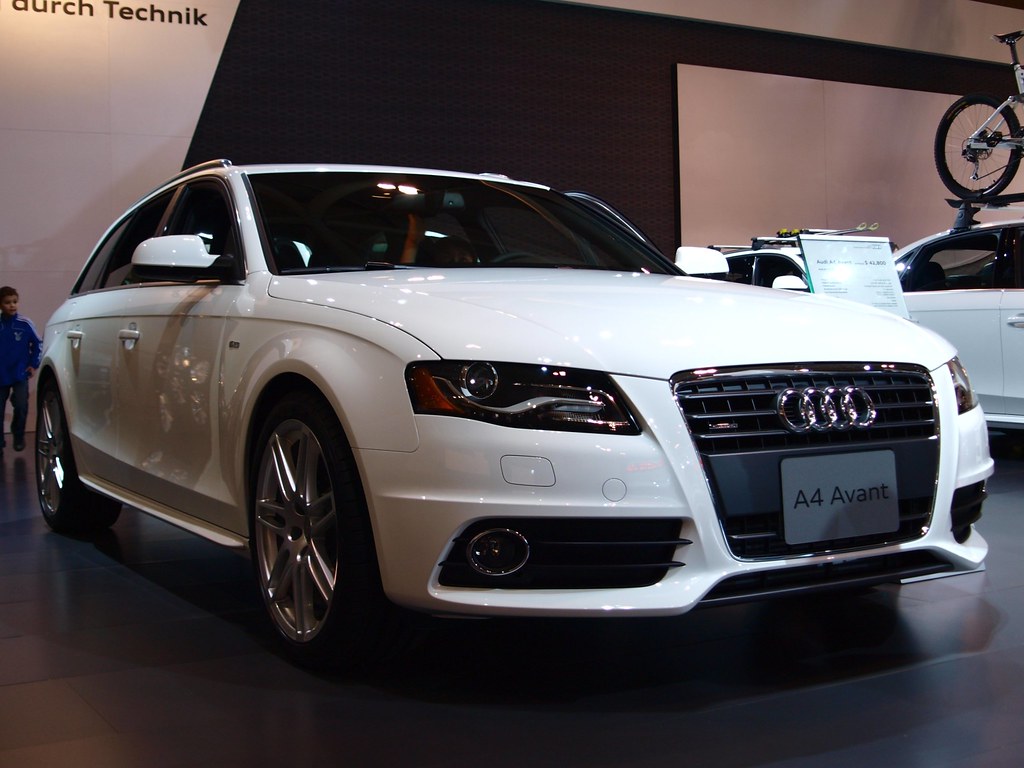
7. **Audi A4**Moving up the luxury ladder, but not necessarily the ladder of road etiquette, we find the Audi A4. Much like its German counterpart, the BMW 3 Series, the A4 has developed a similar, if slightly more refined, reputation among drivers: that of the perpetually hurried luxury sedan owner. While the car itself exudes style and sophisticated engineering, its drivers are often perceived as being in an incessant rush, regardless of traffic conditions, making them a common source of frustration for anyone sharing the asphalt.
The stereotype of the Audi A4 driver often involves a certain assertiveness on the road, characterized by abrupt and often unannounced lane changes. There’s a persistent belief that, much like the BMW, the concept of using a turn signal is seen as a suggestion rather than a requirement, leading to sudden maneuvers that catch other drivers off guard. This perceived impatience and disregard for signaling create an atmosphere of tension, as motorists find themselves constantly anticipating the next unexpected move from an A4 driver.
Interestingly, while the stereotype points to aggressive driving, data from Insurify adds a nuanced layer to this perception. According to their findings, “Audi A4 drivers receive rude behavior citations at a rate of 45.4 per 1,000, which is well above average.” This data, while not necessarily indicating excessive speeding or frequent crashes, strongly suggests a pattern of discourteous road habits such as cutting people off. It points to a driving style that, even if not overtly dangerous, certainly fuels tension and annoyance among fellow commuters.
Ultimately, the Audi A4, despite its sleek design and advanced capabilities, has become shorthand for a particular brand of impatient driving. Many motorists admit to rolling their eyes when one appears in traffic, bracing themselves not just for speed, but for the subtle, yet frustrating, micro-aggressions that come with the “luxury car ego” image. It’s a reminder that even in a premium vehicle, basic road courtesy often goes a long way in shaping public perception.
Car Model Information: 2015 Audi A4 2.0T Premium
Name: Audi A4
Caption: Audi A4 (B9.5; facelift)
Manufacturer: Audi AG
Production: 1994–2025
Assembly: Germany,India,China,Indonesia,Ukraine
Class: Compact executive car
BodyStyle: Sedan (car)
Platform: Volkswagen Group B platform
Layout: Front-engine, front-wheel drive layout
Sp: uk
Predecessor: Audi 80
Successor: Audi A5#Third generation (2024)
Categories: 2000s cars, 2010s cars, 2020s cars, All-wheel-drive vehicles, All articles lacking reliable references
Summary: The Audi A4 is a line of luxury compact executive cars produced from 1994 to 2025 by the German car manufacturer Audi, a subsidiary of the Volkswagen Group. The A4 has been built in five generations and is based on the Volkswagen Group B platform. The first generation A4 succeeded the Audi 80. The automaker’s internal numbering treats the A4 as a continuation of the Audi 80 lineage, with the initial A4 designated as the B5-series, followed by the B6, B7, B8, and the B9.
The B8 and B9 versions of the A4 are built on the Volkswagen Group MLB platform shared with several models and brands across the Volkswagen Group. The Audi A4 automobile layout consists of a front-engine design, with transaxle-type transmissions mounted at the rear of the engine. The cars are front-wheel drive, or on some models, “quattro” all-wheel drive. The A4 is available as a sedan and station wagon. Historically, the second (B6) and third generations (B7) of the A4 also included a convertible version. For the B8 and B9 versions, the convertible, along with a new coupé and 5-door liftback variant, was spun-off by Audi into a new nameplate called the Audi A5.
The B9 generation A4 and A5 will be replaced by B10 version of A5, as part of Audi’s new naming convention.
Get more information about: Audi A4
Buying a high-performing used car >>>
Brand: Audi Model: A4
Price: $11,379 Mileage: 98,606 mi.
Read more about: Beyond the Pitch: David Beckham’s Coveted 1o-Car Collection — A Masterclass in Automotive Luxury and Style
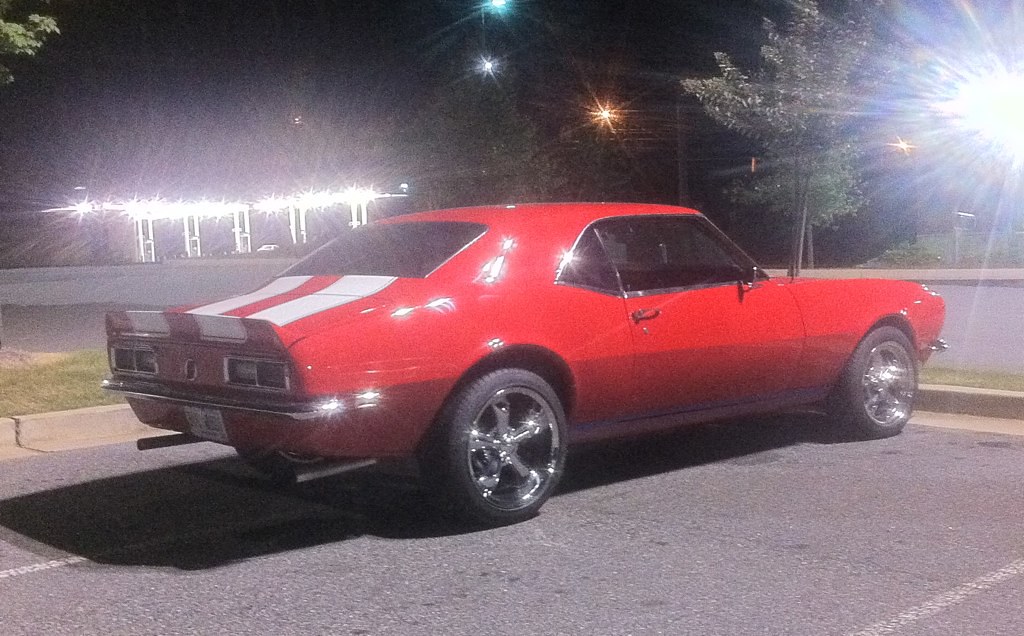
8. **Chevy Camaro**Back to the roaring heart of American muscle, the Chevrolet Camaro stands proudly alongside the Mustang and Charger as an iconic symbol of raw power—and, unfortunately, for many, of aggressive, showboating drivers. The Camaro’s muscular aesthetic and formidable engine practically beg its owners to unleash its full potential, a temptation that, all too often, plays out on public roads rather than dedicated tracks. This association with a palpable “need for speed” mentality is deeply ingrained in the public consciousness.
Camaro drivers are frequently observed engaging in behaviors synonymous with their muscle car brethren: impromptu drag races at stoplights, sudden bursts of acceleration, and a general propensity for “showing off” their vehicle’s capabilities. The distinct, throaty rumble of a Camaro’s engine is often an auditory precursor to these spirited, and sometimes reckless, displays. This loud, unmistakable signature only amplifies its fiery image, cementing its place in the public imagination as a car driven by individuals who prioritize adrenaline over everyday road safety.
The data, unfortunately, lends some weight to these widely held perceptions. “A high total loss rate suggests the Camaro sees more severe crashes than average.” While the Insurance Institute for Highway Safety may not directly confirm crash involvement, the car’s reputation for high-speed incidents persists. Moreover, it’s an open secret that “many owners modify these cars for added power, anecdotally tied to riskier driving,” further pushing the boundaries of what’s safe or legal on public thoroughfares.
While it’s crucial to acknowledge that countless Camaro owners drive responsibly and with respect for traffic laws, the highly visible actions of a subset of drivers continue to define the car’s public image. The inherent power and performance capabilities of the Camaro, combined with the desire to live up to its muscle car heritage, seem to uniquely attract drivers inclined to push the limits, often creating memorable — and sometimes regrettable — road experiences for everyone else.
Car Model Information: 2018 Chevrolet Camaro 1LS
Name: Chevrolet Camaro
Manufacturer: Chevrolet
Production: 1966–2002,2009–2023
ModelYears: 1967–2002,2010–2024
Class: Pony car
BodyStyle: coupe,convertible
Platform: GM F platform,GM Zeta platform,GM Alpha platform
Layout: Front-engine, rear-wheel-drive layout
Categories: 1970s cars, 1980s cars, 1990s cars, 2+2 coupés, 2000s cars
Summary: The Chevrolet Camaro is a mid-size American automobile manufactured by Chevrolet, classified as a pony car. It first went on sale on September 29, 1966, for the 1967 model year and was designed to compete with the Ford Mustang. The Camaro shared its platform and major components with the Firebird, produced by General Motors’ Pontiac division that was also introduced for the 1967 model year.
Four distinct generations of the Camaro were developed before production ended in 2002. The nameplate was revived on a concept car that evolved into the fifth-generation Camaro; production started on March 16, 2009.
Production of the sixth generation of the Camaro ended in December 2023, for the 2024 model year.
Get more information about: Chevrolet Camaro
Buying a high-performing used car >>>
Brand: Chevrolet Model: Camaro
Price: $19,125 Mileage: 69,196 mi.
Read more about: Old School Cool: 10 Cars From the Fabulous ’50s That Still Stop Traffic and Steal Hearts

9. **Mercedes-Benz C-Class**Luxury, as we’ve seen, doesn’t always guarantee courtesy on the road, and the Mercedes-Benz C-Class offers another compelling example. While it represents a pinnacle of German engineering, comfort, and status, drivers of the C-Class are often accused of an almost palpable sense of entitlement and arrogance behind the wheel. This stereotype paints them as inconsiderate, viewing the road as their personal domain and other motorists as mere obstacles to be navigated around, or simply ignored.
Common complaints against C-Class drivers include abrupt lane changes without signaling, cutting people off in traffic, and a general disregard for parking regulations, often exemplified by parking across multiple spots or in restricted areas. These behaviors contribute to the overarching “luxury car ego” image, lumping C-Class owners with those of BMWs and Audis as drivers who mistakenly believe their premium vehicle grants them special dispensation from basic road rules and common courtesies.
Digging into the numbers, we find that the perceptions are not entirely unfounded. “C-Class drivers have higher-than-average accident claim rates, according to several major insurers.” Analysts attribute this phenomenon to a fascinating mix of factors, specifically citing “youthful luxury buyers and turbocharged engines.” This suggests a demographic often eager to experience the performance capabilities of their vehicle, perhaps lacking the full experience or judgment to do so safely. The model is also “particularly flagged in Southern California, where it shows up in red-light violation and rear-end collision data,” pointing to specific regions where these driving habits are more pronounced.
For many motorists, encountering a Mercedes-Benz C-Class on the road often evokes a sense of resigned anticipation for inconsiderate behavior. Despite the car’s undeniable prestige and refined driving experience, its association with a certain type of driver who prioritizes their own schedule and convenience over shared road safety means it continues to symbolize frustrating driving for a significant portion of the public.
Read more about: Decoding the Dream: 14 Affordable Classic Cars That Are a Joy to Own and Maintain for Every Enthusiast
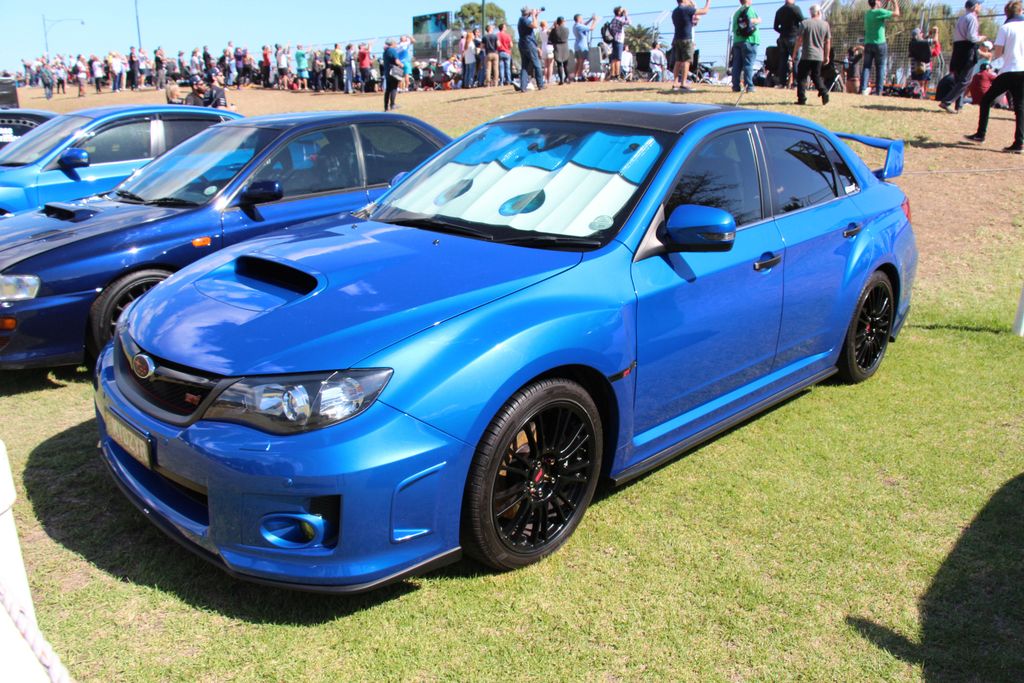
10. **Subaru WRX**Finally, we arrive at the Subaru WRX, a car with a dedicated cult following among automotive enthusiasts, yet one that also unapologetically carries a notorious “reckless driver” stereotype. Known for its potent turbocharged engine, all-wheel drive, and storied rally heritage, the WRX is a performance machine that often attracts a specific kind of driver: typically younger individuals eager to push the limits of its impressive capabilities, often to the consternation of other road users.
The reputation of WRX owners is largely built around behaviors such as excessive speeding, aggressive cornering, and generally treating public roads as if they were a rally stage. The car’s direct connection to the high-adrenaline world of rally racing seems to inspire its drivers to emulate that style, even in everyday traffic. This often translates into rapid accelerations and sharp, sudden maneuvers that can be both exhilarating for the driver and unnerving for anyone else caught in their wake.
The statistics, in this instance, provide a compelling backdrop to the anecdotal evidence. “According to Insurify, 13.6% of its drivers have speeding tickets, well above average.” This figure alone paints a clear picture of a driver base more prone to putting the pedal to the metal. Further adding to safety concerns, “The driver fatality rate is 54, compared to the norm of 36.” These alarming safety concerns, stemming from insurance-based data, strongly suggest that while the WRX is built for performance, its drivers often explore those limits in ways that significantly increase risk.
While not every WRX owner fits this mold, the collective actions of enough drivers have firmly cemented the car’s reputation. Onlookers often make an immediate assumption that a WRX zipping past is being driven by someone testing its limits, a testament to how deeply ingrained this stereotype has become. It’s a powerful reminder that a car’s performance heritage can, in some cases, encourage a driving style that, while thrilling for some, is less than ideal for the shared road.
At the end of the day, it’s a truth universally acknowledged in the automotive world: it’s not truly the car that dictates a “bad” driver; it’s the person behind the wheel. Yet, these stereotypes persist with an almost stubborn resilience, forged and reinforced by the powerful interplay of viral videos, social media memes, and, most powerfully, our own repeated experiences on the road. Cars like the Nissan Altima, Audi A4, Chevy Camaro, Mercedes-Benz C-Class, and Subaru WRX didn’t just stumble into these reputations overnight; they’ve been meticulously shaped over years of perception, anecdote, and, in many cases, statistical backing.
Car Model Information: 2022 Subaru WRX Limited
Name: Subaru WRX
Caption: 2022 Subaru WRX GT
Aka: Subaru Impreza WRX (1992–2014)
Production: 1992–2014 (Impreza-based models),2015–present (standalone models)
Assembly: Ōta, Gunma
Layout: Front-engine, four-wheel-drive layout
Manufacturer: Subaru
Related: Subaru Levorg,Subaru WRX STI
Class: Sport compact
BodyStyle: Sedan (automobile)
Categories: 2020s cars, All-wheel-drive vehicles, All articles with unsourced statements, Articles with short description, Articles with unsourced statements from August 2020
Summary: The Subaru WRX is an all-wheel drive sport compact car manufactured by the Japanese automaker Subaru, originally based on the Impreza created for the World Rally Championship in 1992. Subaru claimed the name WRX stands for “World Rally eXperimental”. Starting with the 2015 models, the WRX lineup has been split from the Impreza, with a different body style that is not offered as an optional hatchback/wagon, being introduced as the separate Levorg model.
Get more information about: Subaru WRX
Buying a high-performing used car >>>
Brand: Subaru Model: WRX
Price: $27,741 Mileage: 35,004 mi.
Read more about: The Automotive Hall of Shame: 15 Infamous Rides and Their Reputations for Bad Drivers and Dangerous Flaws
While there are undoubtedly legions of responsible owners for every single model on this list who navigate our roads with perfect courtesy, these specific vehicles continue to symbolize either reckless, entitled, or just plain frustrating driving behavior for a vast majority of us. So, the next time one of these infamous rides appears in your rearview mirror, or cuts you off without a signal, you might just find yourself bracing for impact—even if you know, deep down, that it’s probably unfair to the car itself. But hey, “Driver Vibes Are Real,” right? We’ve all felt it. Do you agree with this list, or do you have a different car that consistently makes you sigh? Let us know your thoughts and join the conversation in the comments below!


